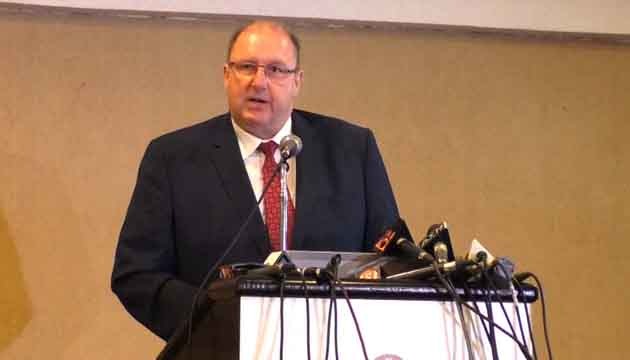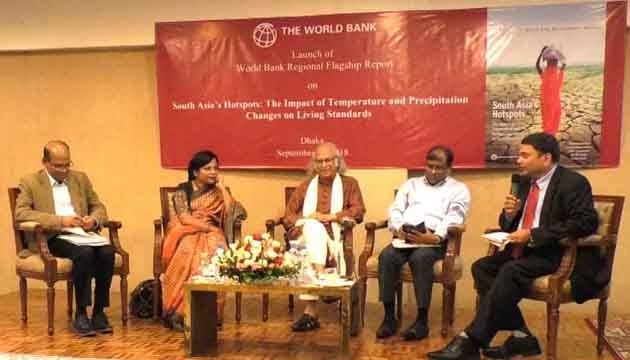Report by Humayun Kabir.
Nearly half of South Asia’s population, including more than three-quarters of Bangladesh’s population, is at risk of declining living standards due to rising temperature and erratic rainfall from climate change, says a new World Bank Report.
The report released today in Dhaka, South Asia’s Hotspots: The Impact of Temperature and Precipitation Changes on Living Standards, finds that in the last 60 years the region’s average temperatures have increased and will continue rising, which is affecting agriculture, health and productivity. This could cost Bangladesh 6.7 percent of Gross Domestic Product and depress the living standards of more than three-quarters of the country’s population by 2050.
Bangladesh’s average annual temperatures are expected to rise by 1.0°C to 1.5°C by 2050 even if preventive measures are taken along the lines of those recommended by the Paris climate change agreement of 2015. If no measures are taken, then the country’s average temperatures are predicted to increase by 1.0°C to 2.5°C.

Mr.Hartwig Schafer, The World Bank -Vice President for South Asia Region.
Picture – Ashim Benedict Palmer
Around the world, and especially for Bangladesh, climate change is an acute threat to development and efforts to end poverty,” said Hartwig Schafer, Vice President for South Asia Region. “In addition to the coastal zones, the warming weather will severely affect the country’s inland area in the next decades. To deal with climate change, the country needs to focus on creating jobs outside the agriculture sector and improve the capacity of its government institutions. The World Bank is committed to helping Bangladesh become more resilient to climate change.”
By 2050, Chittagong Division will be most vulnerable to changing climate. Seven out of the top 10 most-affected hotspot districts—where changes in average temperature and precipitation will have a negative effect on living standards—will be in the Chittagong Division. The top two climate hotspots will likely be Cox’s Bazar and Bandarban, which may suffer from a more than 18 percent decline in their living standards, followed by Chittagong, Rangamati, and Noakhali.

Picture – Ashim Benedict Palmer
“These weather changes will result in lower per capita consumption levels that could further increase poverty and inequality in one of the poorest regions of the world, South Asia,” says Muthukumara Mani, Report author and World Bank Lead Economist in the South Asia Region. “Identifying hotspots will help policymakers in finding specific locations and household types where the resources are needed the most to address the rising risk to living standards.”
Abul Maal Abdul Muhith, Minister of Finance, was the chief guest at the event. The launch event brought together multiple stakeholders to discuss best adaptation strategies, identifying key bottlenecks, as well as ways to strengthen institutional capacity to respond to the increasing threat of climate change and natural disasters.